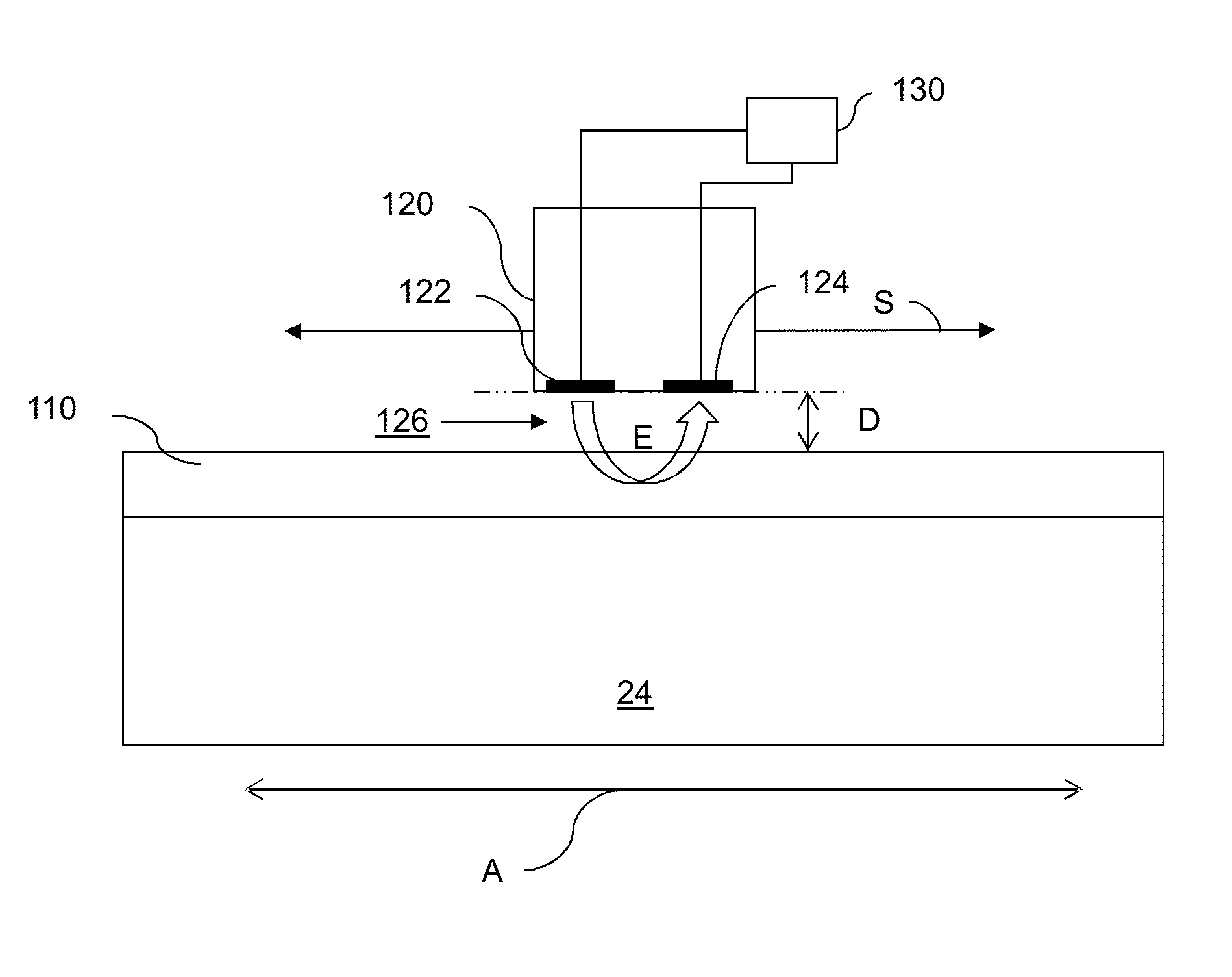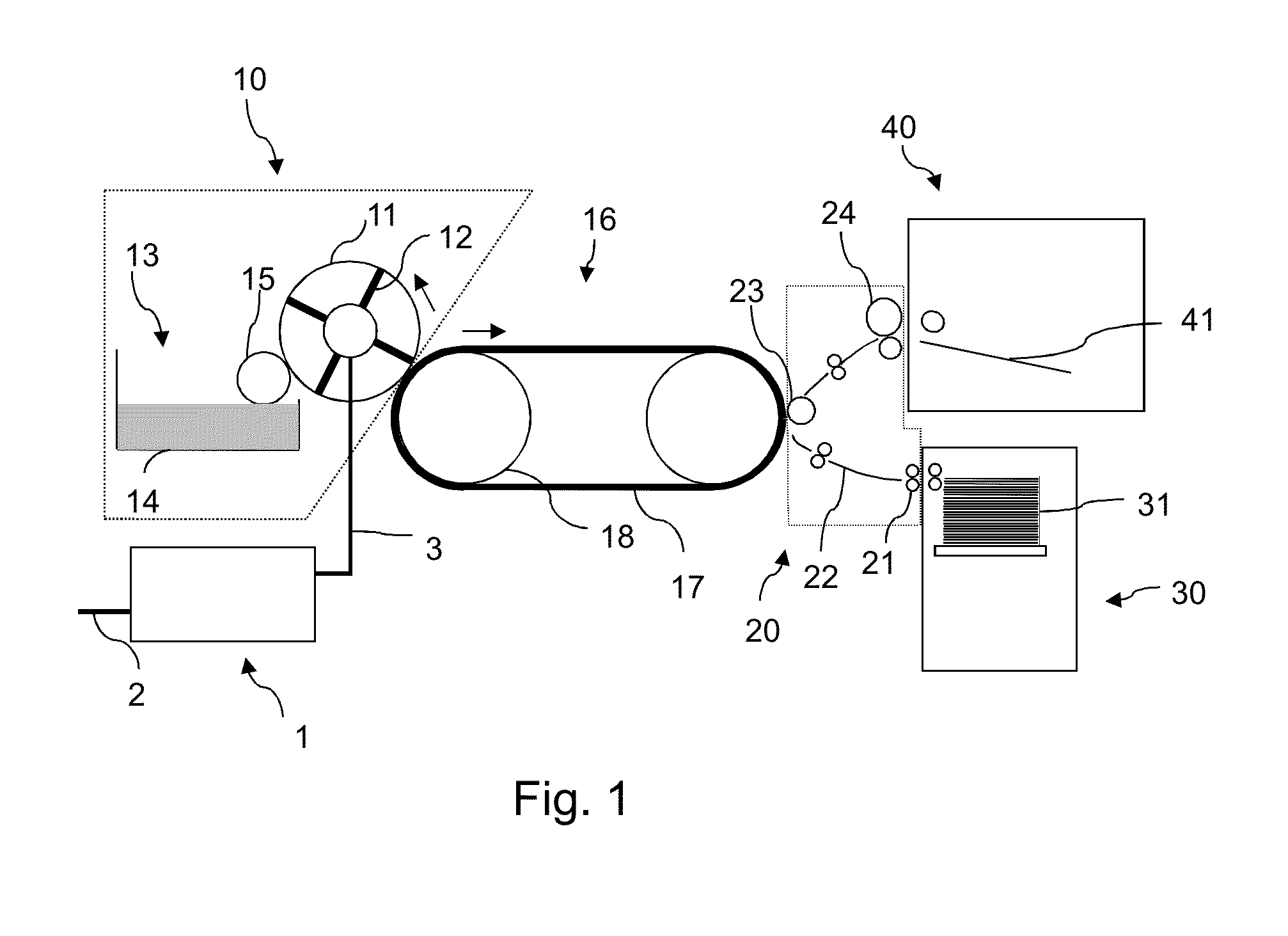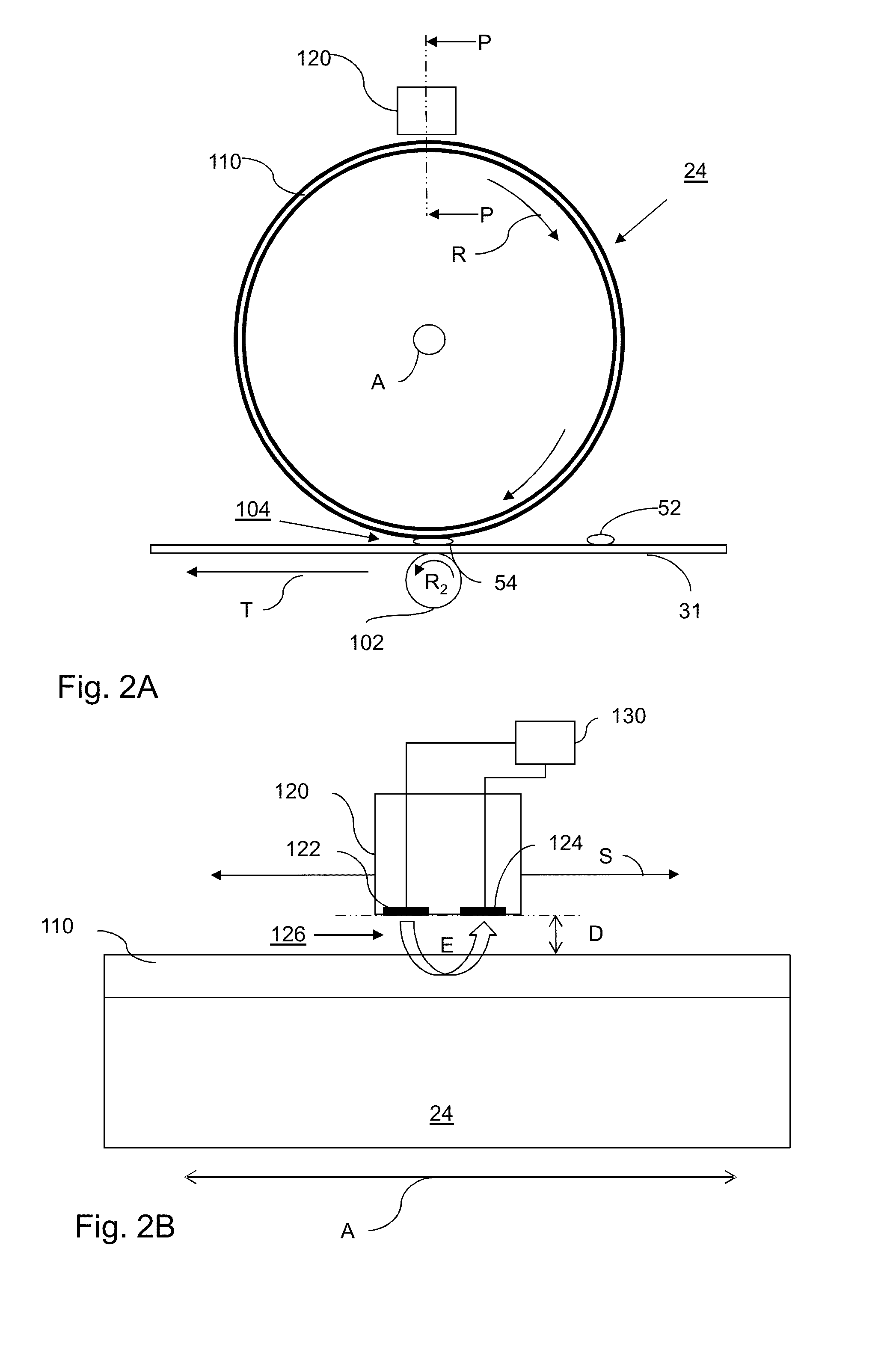Method for determining a characteristic of a surface layer of a fuser element
- Summary
- Abstract
- Description
- Claims
- Application Information
AI Technical Summary
Benefits of technology
Problems solved by technology
Method used
Image
Examples
first embodiment
[0070]FIG. 2B shows a cross section view along the line P-P in FIG. 2A of the capacitive probe according to the invention. In FIG. 2B the capacitive probe 120 comprises a first electrode 122 and a second electrode 124. Both first electrode 122 and second electrode 124 are operatively coupled to the capacitive measurement circuit 130. The second electrode 124 is arranged adjacent to the first electrode 122 thereby forming a capacitor. Both the first electrode 122 and the second electrode 124 are plate electrodes, and both electrodes 122, 124 are arranged adjacent to and opposing the surface layer 110 of the fuser roller 24. Both first electrode 122 and second electrode 124 are arranged at a distance D from the surface layer 110 of the fuser roller 24, thereby forming a gap 126, which comprises air, between both first electrode 122 and second electrode 124 and the surface layer 110.
[0071]During a capacitive measurement cycle the potential of the first electrode 122 is changed by a pre...
second embodiment
[0074]FIG. 2C shows a cross section view along the line P-P in FIG. 2A of the capacitive probe according to the invention. The capacitive probe 220 comprises a first electrode 222 and a second electrode 224. The second electrode 224 surrounds the first electrode 222. The first electrode 222 comprises an electric insulating coating 225 in order to electrically decouple the first electrode 222 from the second electrode 224. The first electrode 222 further comprises an uncovered end 223. Both electrodes 222, 224 are operatively coupled to the capacitive measurement circuit 230. The second electrode 224 is arranged adjacent to the end 223 of the first electrode thereby forming a capacitor. Both the end 223 of the first electrode and the second electrode 224 are arranged adjacent to and opposing the surface layer 110 of the fuser roller 24 at a distance D from the surface layer 110 of the fuser roller 24, thereby forming a gap 226, which contains air, between both first electrode 222 and...
third embodiment
[0078]FIG. 2D shows a cross section view along the line P-P in FIG. 2A of the capacitive probe according to the invention. The capacitive probe 240 comprises a first electrode 242 and a second electrode 244. Both first electrode 242 and second electrode 244 are operatively coupled to the capacitive measurement circuit 260. The second electrode 244 is arranged adjacent to the first electrode 242 thereby forming a capacitor. Both the first electrode 242 and the second electrode 244 are plate electrodes, which are both arranged adjacent to and opposing the surface layer 110 of the fuser roller 24. The capacitive probe further comprises a dielectric surface layer 246, which is arranged in between the first and second electrode 242, 244 and the surface layer 110 of the fuser roller 24. The dielectric surface layer has a thickness T. The dielectric surface layer 246 of the capacitive probe is arranged in contact with the surface layer 110.
[0079]The capacitive probe 240 is movably arranged...
PUM
 Login to View More
Login to View More Abstract
Description
Claims
Application Information
 Login to View More
Login to View More - R&D
- Intellectual Property
- Life Sciences
- Materials
- Tech Scout
- Unparalleled Data Quality
- Higher Quality Content
- 60% Fewer Hallucinations
Browse by: Latest US Patents, China's latest patents, Technical Efficacy Thesaurus, Application Domain, Technology Topic, Popular Technical Reports.
© 2025 PatSnap. All rights reserved.Legal|Privacy policy|Modern Slavery Act Transparency Statement|Sitemap|About US| Contact US: help@patsnap.com



